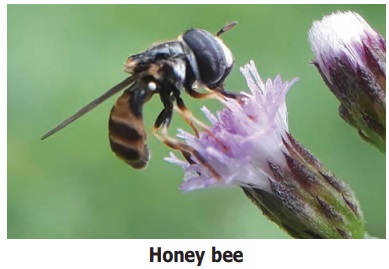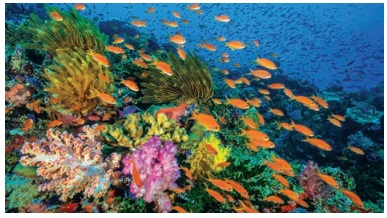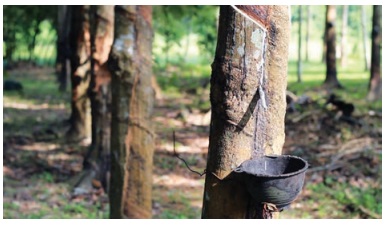Plants in Daily Life | Term 3 Unit 5 | 6th Science - Interrelationship between plants and animals | 6th Science : Term 3 Unit 5 : Plants in Daily Life
Chapter: 6th Science : Term 3 Unit 5 : Plants in Daily Life
Interrelationship between plants and animals
Interrelationship
between plants and animals
Animal-plant Interactions
Animals rely on plants for their food and
shelter. This relationship benefits not only
animals but also plants. Such relationship
is economically significant.
For example, silkworms feed on mulberry leaves
and live of mulberry plants. This relationship between a worm and a plant is
economically useful for us in silk production.

Animals, pests, and birds are essential for cross-pollination
of plants.
Bright colours of flowers, smell and honey
attract insects. As the insects go from one flower to another, they leave the
pollen grains from their body. This results in cross-pollination and the
formation of vegetables and fruits.

These insect pollinators and birds need to be
protected to produce the best yield.
Bees are the best pollinators. They also give
us honey.

Plants and algae living in coral reefs are the
food for variety of fishes. Fisheries work is done in these areas.

Animals and birds play an important role in
spreading seeds of various plants. The digestive enzymes in the digestive
system of the birds soften the protective layer of the seeds and make it easier
to germinate.
If these natural relationship between animals
and plants are affected, it shows its impact on economy too.
Other uses of
plants
1. Maintain
soil fertility
Plants maintain soil fertility. Their droppings
and shedding of leaves, fruits and other parts degrade in the soil to form
humus. This humus increases soil fertility. Eg. Plants like blue green algae
and bacteria like Pseudomonas are also extensively used to fix nitrogen in the
soil for agriculture.
2. Prevent
soil erosion
Plants when grown in dense will prevent soil
erosion (ie) in times of wind or flood, the fertile top layer of
soil is carried away by air or water. This is prevented by plants if grown
around.
3. Bio –
fuels
Some plants are also grown for the sake of bio
- fuels. Plant fuel is less toxic as it does not emit harmful gases and also
less expensive. Eg. Jatropha. Even the plant waste is used to generate
electricity. eg: Sugar mills
Pala spinach
Osteoarthritis is a joint disease
affecting joints and knee in old age and any age people. Currently Indian
scientists at CDRI (Central Drug Research Institute – Lucknow) have made a nano
formulation from the Palak (Pala spinach) to cure this disease..
4. Rubber
and Natural plastic
We obtain rubber for tyre, wiring, seats etc
from plants. Natural plastics are also produced from plants which are
biodegradable. So it does not do harm to our environment.

5. Neem Oil coated Urea
Farmers in India used urea as a fertilizer to increase
the agricultural productivity. Indian Scientists made Neem Coated urea which
released nitrogen gradualy and helps the plants to absorb maximum nitrogen. It
reduces the impact of urea on an environment.
Related Topics